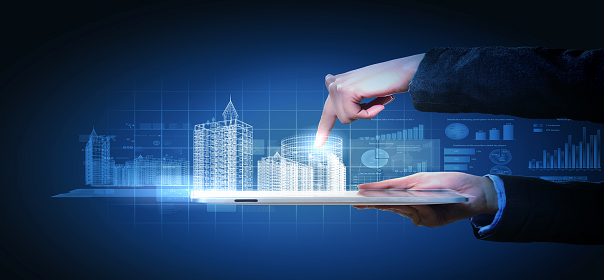Cost pressure encourages building owners and facility managers to look into integrated building automation systems. In addition, managers seek the ability to manage multiple systems through one website that acts as a portal. The melding of IT and building control systems will likely shape future developments in this sector. With the Internet of Things concept, a range of devices, sensors and people are given IP addresses to communicate wirelessly over the Internet.
Control and savings with building management systems
Building Management Systems (BMS) is the backbone of smart buildings. They are the systems put in place to allow building owners and tenants to monitor, maintain and manage the mechanical, electrical and electromechanical functions within a structure. BMS deployment usually involves the installation of sensors, software, a network and a cloud-based data store. BMS functions include management of heating, ventilation and air conditioning systems, as well as lighting, security and safety operations. But perhaps a building management system’s biggest appeal is its proven ability to lower energy usage, and therefore, save money.
An IoT solution to save money
The IoT, with its low-powered networks and inexpensive sensors, is helping to keep smart building costs down. According to Buildings, adding IoT-based controls and monitoring to a building can cost from just $5,000 to $50,000. Intel said an IoT-based approach using wireless sensors can reduce deployment cost by around 30% when compared to a traditional BMS.
Instrumentation involves installing an independent network of actuators and sensors – temperature and lights, for example – throughout a building, which eliminates the need to retrofit existing equipment. A centralized portal provides building managers with the analytic tools needed to increase energy efficiency and productivity through data gathering and analysis, comprehensive reports and system wide alarm management.
Building and energy performance
Towards Smart Buildings: Optimization of Energy Efficiency Optimizing energy efficiency in buildings is an integrated task that comprises the whole lifecycle of the building.
The main stages are:
- Design, using simulations to predict the energy performance.
- Construction, testing individual subsystems.
- Operation, monitoring the building and controlling actuators.
- Maintenance, solving infrastructure problems due to energy deficiencies.
- Demolition, recycling materials and usable elements.
At Anglo African, our automation solutions are based on intelligent installation system that meets the highest requirements for applications in modern building control. KNX technology (http://www.knx.org) is accepted as the world’s first open standard for the control of all types of intelligent buildings – industrial, commercial or residential. Our solutions are for new and existing buildings and is extendible/adaptable to new needs.
Are you looking to improve the efficiency of your business . Learn how Anglo African team can help you to implement an automation strategy for your enterprise needs. The Anglo African team is fully committed to helping you in achieving your new vision to drive operations to the fullest potential. For specific queries, get in touch with Navin by calling on: 2331636 or via e-mail at navin.mautbar@infosystems.mu

